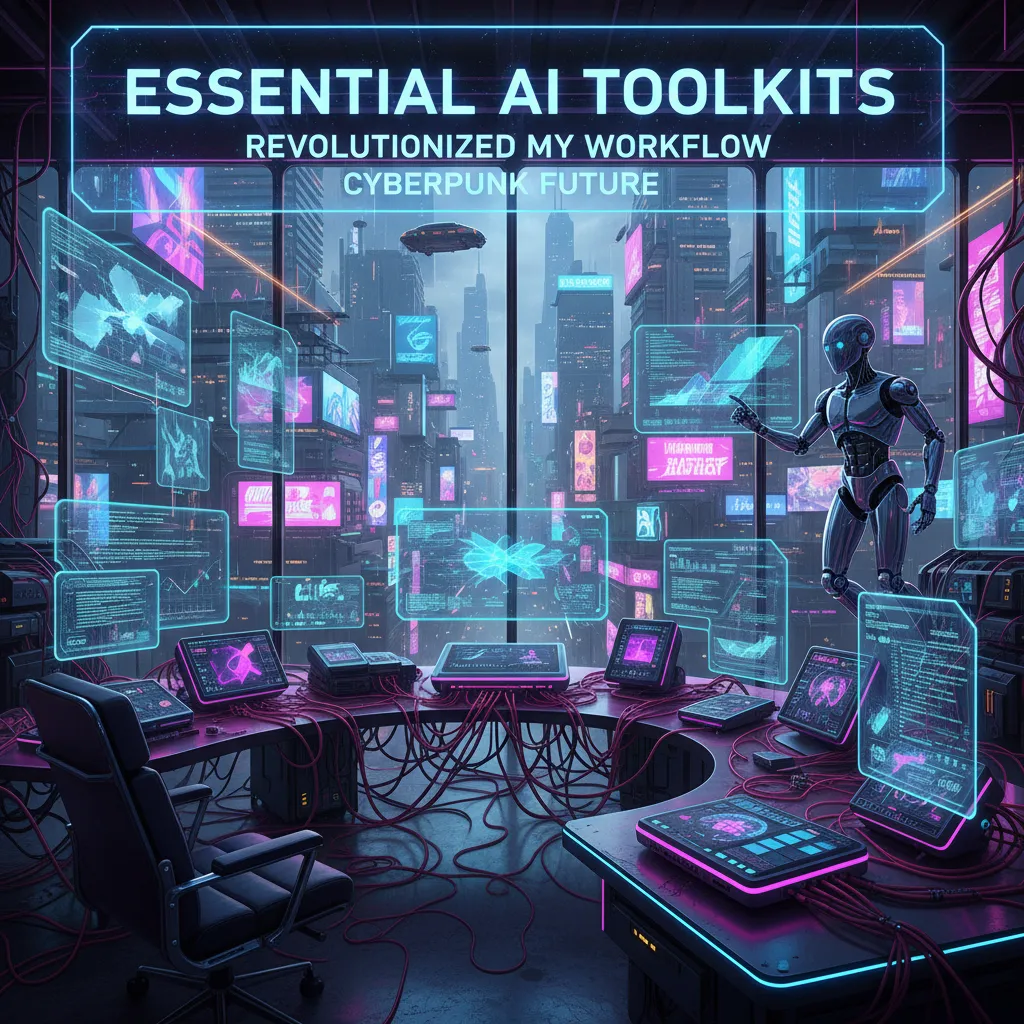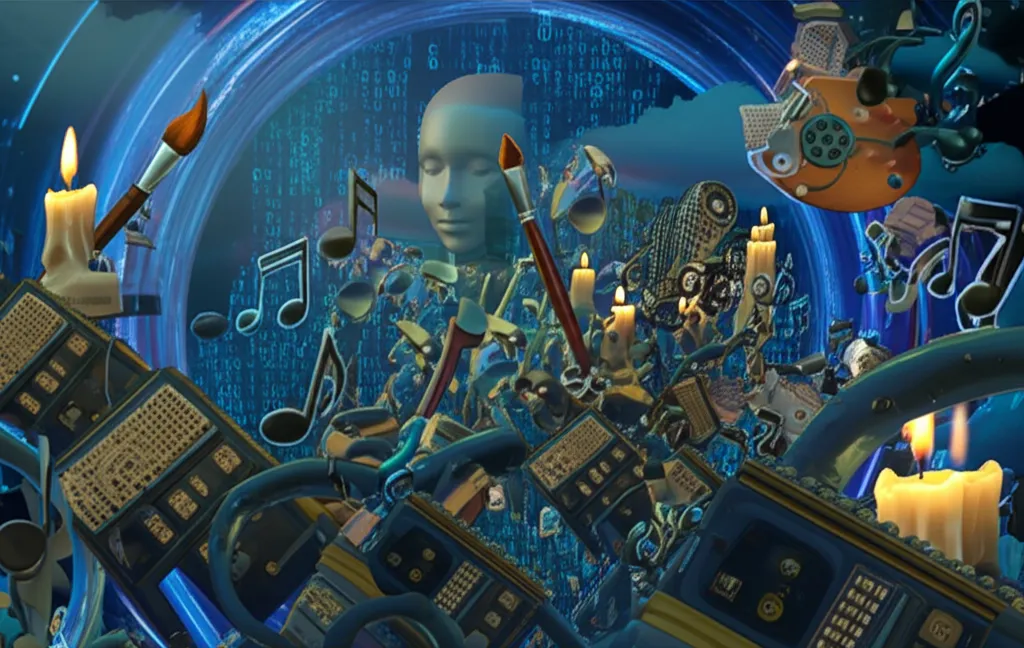The first time I tried to run a machine learning model in Python, my laptop sounded like it was preparing for lift-off—and promptly crashed. What I didn’t realize then was that I was missing the real magic ingredients: the Python libraries that make AI development not just possible, but actually enjoyable. In this post, I’ll share my crash course in assembling a Python AI toolkit, detours and all, including the five libraries that finally got me off the launchpad.
NumPy: The Bedrock of AI Alchemy
If you ask any AI developer about the best Python AI libraries, NumPy will always make the list. My own journey with NumPy began with a series of embarrassing mistakes—mainly, repeatedly messing up matrix multiplication by hand. Everything changed when I discovered the NumPy library. Suddenly, complex operations became a single line of code, and my workflow transformed overnight.
Before NumPy, handling numerical data in Python felt clunky and slow. I’d write endless loops just to add arrays or perform basic statistics. But with NumPy arrays and its powerful broadcasting feature, I could manipulate entire datasets without breaking a sweat. Here’s a quick example:
import numpy as np
a = np.array([1, 2, 3])
b = np.array([4, 5, 6])
print(a + b) # Output: [5 7 9]
What’s amazing is that NumPy isn’t just for convenience—it’s the foundation for almost every advanced data science library out there, from Pandas to TensorFlow. In fact, over 90% of major AI Python projects rely on NumPy as a low-level dependency. Even if you don’t see it, NumPy is quietly powering your models behind the scenes.
Scientists and AI professionals still swear by this open-source, BSD-licensed veteran for scientific computation. Its robust community and continuous updates since 2006 make it a true cornerstone of the AI ecosystem.
Pandas: Taming Data One Row at a Time
When I first dipped my toes into AI development, my initial dataset was a tangled mess of missing values, odd formats, and inconsistencies. Enter the Pandas library—the unsung hero of data handling libraries in Python. Pandas made sense of my chaos, transforming raw data into something I could actually work with. It’s no exaggeration to say that data wrangling is the Achilles’ heel of most AI projects, and Pandas is the hero most called upon.
What makes Pandas so essential? At its core are DataFrames and Series—intuitive structures that bring spreadsheet-like clarity to even the messiest datasets. Imagine Excel, but with the power and flexibility of Python. I find myself reaching for Pandas whenever I need to clean, preprocess, or explore data before feeding it into machine learning or deep learning models. Its versatile API lets me:
Handle missing data with a single line of code
Filter, group, and aggregate data effortlessly
Prepare features for modeling with ease
Pandas celebrated its 15th anniversary in 2023 and still dominates as the primary Python tool for structured data manipulation. It’s no wonder the data science libraries community swears by it for efficient processing of large datasets and handling real-world data inconsistencies. Whenever the chaos of real-world data threatens my workflow, Pandas is my first line of defense.
Scikit-learn: Your AI Playground (No White Coat Required)
When I first dipped my toes into the world of machine learning, the Scikit-learn library became my go-to toolkit. Forget intimidating jargon and endless theory—Scikit-learn’s approachable interface taught me more about algorithms than any textbook ever could. It’s the heart of the Python ML ecosystem, offering a gentle learning curve that invites experimentation rather than fear.
What makes Scikit-learn stand out among machine learning libraries is its robust suite of over 40 built-in algorithms for classification, regression, clustering, and dimensionality reduction. With just a few lines of code, I could load a dataset, split it, and train a model—no PhD required. The library’s helpful error messages and ready-made datasets (like Iris and Digits) encouraged me to try, fail, and learn without hesitation.
Accessible Implementations: Classic ML algorithms are just an import away.
Seamless Integration: Works beautifully with
NumPyandPandas.Open-Source and BSD-Licensed: Free for everyone, with a thriving community.
Influential API: Its design has shaped many other Python ML and AutoML libraries.
Scikit-learn’s documentation is clear and thorough, making it a favorite in both academia and industry. Whether you’re building your first model or refining a production pipeline, this open-source library bridges the gap between raw data and advanced AI, making model-building fun—not frightening.
TensorFlow vs. PyTorch: The Heavyweights of Deep Learning
My experiments in AI development truly accelerated once I grasped the philosophical—and tactical—differences between the TensorFlow library and the PyTorch library. Both are deep learning frameworks at the heart of modern AI, but their approaches set them apart in real-world workflows.
TensorFlow pioneered deep learning at scale, and its static computation graphs initially felt rigid to me. However, this rigidity translates into blazing speed and reliability when deploying models in production. Enterprises love TensorFlow for its robust deployment options, cross-platform support, and seamless integration with cloud services. It’s no wonder TensorFlow dominates large-scale, production-ready AI initiatives.
On the other hand, PyTorch’s dynamic computation graphs became my creative sandbox. The PyTorch library feels more “Pythonic,” making it a favorite for researchers and anyone prototyping new ideas. Its flexibility lets you tweak models on the fly, which is invaluable during rapid R&D cycles. In academia and research labs, PyTorch is quickly becoming the default choice.
Here’s the twist: most professionals—including myself—don’t pick sides. Instead, we mix and match, using TensorFlow for scalable deployment and PyTorch for experimentation. As of 2025, these two deep learning frameworks account for over 75% of library usage in AI projects. Whether you’re building image classifiers or generative models, both libraries form the backbone of today’s AI development landscape.
So, which camp do you fall into—or do you blend both like most modern AI developers?
Wild Card: What About Tomorrow’s Game-Changers?
One of my favorite moments as an AI developer was when I tried Hugging Face just to see what the fuss was about. I plugged it into a simple chatbot project, and suddenly, my bot was writing love poems that actually made sense. That’s when I realized: tomorrow’s essential AI libraries can come out of nowhere, and staying open to new tools is every developer’s secret weapon.
While the Big 5 Python AI libraries still dominate, the Python ML ecosystem is constantly evolving. Libraries like Hugging Face are disrupting natural language processing, making it possible to deploy state-of-the-art NLP models with just a few lines of code. The Keras library has made entry-level deep learning accessible, while automated ML tools like PyCaret are gaining traction for their low-code, accessible approach to machine learning. In fact, Hugging Face’s explosive growth—over 100,000 GitHub stars by 2025—shows just how quickly open-source libraries can change the landscape.
Here’s the thing: the best AI pros I know cultivate a kind of ‘library curiosity.’ They’re always poking around for what’s new or weird, reading about emerging open-source libraries, and never letting themselves fall behind the tech curve. In AI development, adaptability is crucial. Innovation never sleeps, and tomorrow’s game-changer could be just one pip install away. Stay curious, and you’ll always be ready for what’s next.



